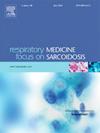Longitudinal respiratory trajectories in motor neuron disease phenotypes: Multiparametric characterization and clinical management
IF 3.5
3区 医学
Q2 CARDIAC & CARDIOVASCULAR SYSTEMS
引用次数: 0
Abstract
Background
Motor neuron diseases (MNDs) encompass amyotrophic lateral sclerosis (ALS), pure/predominant upper (pUMN) and lower motor neuron (pLMN) phenotypes. However respiratory studies have mainly focused on bulbar (B-ALS) and spinal (S-ALS) onset ALS, while little is known in other MNDs. In this study we therefore aimed at characterizing baseline and longitudinal patterns of respiratory involvement and their clinical management in MND patients stratified by their clinical phenotype.
Methods
Serial pulmonary function tests (PFTs) (spirometry, arterial blood gas analysis, overnight pulse oximetry and peak cough expiratory flow) records of the MND patients hospitalized between 2020 and 2024 were reviewed. Using longitudinal examinations, deltas of variation in respiratory measures were generated and frequency and timings of non-invasive ventilation (NIV) adaptation were evaluated. Data were compared between phenotypes using the Kruskal–Wallis test with Bonferroni adjustment.
Results
42 S-ALS, 105 B-ALS, 42 pLMN and 31 pUMN patients were included. Both at baseline and longitudinally, B-ALS showed the worst respiratory parameters, followed by pLMN, S-ALS and pUMN. NIV adaptation was equally frequent between groups, but earlier in B-ALS compared to pUMN (p = 0.01). At baseline, B-ALS showed worse spirometry and PCEF only, but compared to all the other phenotypes (p from <0.0001 to 0.03). Longitudinally, they conversely exhibited more severe decline in all PFTs, but only relative to pUMN (p from 0.0009 to 0.04), with deltas of variation comparable to the ones observed in S-ALS and pLMN. Among NIV users, more severe PCEF and spirometry impairment further emerged in S-ALS compared to pUMN (p from 0.01 to 0.04).
Conclusions
We evidenced convergent trajectories of respiratory decline across B-ALS, S-ALS and pLMN, highlighting the utility of multimodal assessments for tracking progressing respiratory disturbances. These findings have potential to accelerate earlier and more tailored respiratory management across diverse MND phenotypes.
求助全文
约1分钟内获得全文
求助全文
来源期刊

Respiratory medicine
医学-呼吸系统
CiteScore
7.50
自引率
0.00%
发文量
199
审稿时长
38 days
期刊介绍:
Respiratory Medicine is an internationally-renowned journal devoted to the rapid publication of clinically-relevant respiratory medicine research. It combines cutting-edge original research with state-of-the-art reviews dealing with all aspects of respiratory diseases and therapeutic interventions. Topics include adult and paediatric medicine, epidemiology, immunology and cell biology, physiology, occupational disorders, and the role of allergens and pollutants.
Respiratory Medicine is increasingly the journal of choice for publication of phased trial work, commenting on effectiveness, dosage and methods of action.
 求助内容:
求助内容: 应助结果提醒方式:
应助结果提醒方式:


